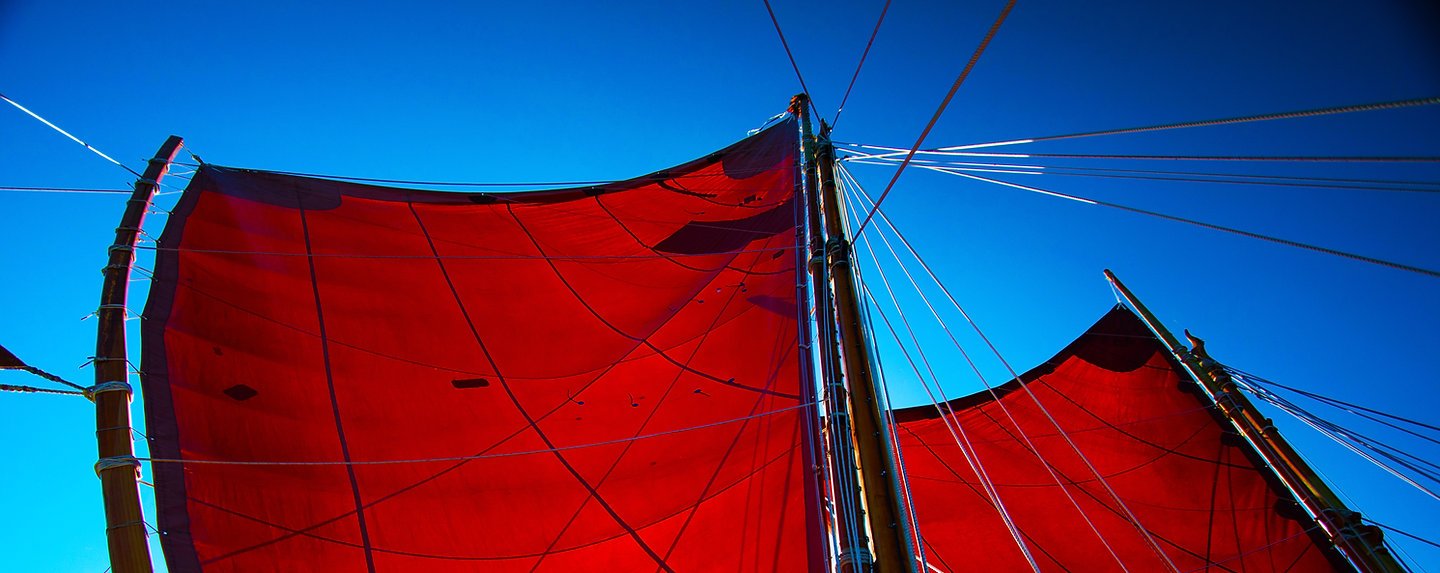Raise Hawaiki: Kealaikahiki
Notes by Michael-Thomas Foumai
MICHAEL-THOMAS FOUMAI (b.1987)
Raise Hawaiki: Kealaikahiki, Suite for Orchestra (2019), 15 minutes
Michael-Thomas Foumai was born on December 17, 1987 in Honolulu, Hawaiʻi.
Raise Hawaiki was first performed by the Hawaiʻi Symphony Orchestra, Oʻahu Choral Society, and choirs from the University of Hawaiʻi, Hawaiʻi Youth Opera Chorus and the community conducted by Esther S. Yoo on March 28, 2019 in Honolulu, Hawaiʻi. The Kealakahiki Suite was first performed by the Hawaii Youth Symphony conducted by John Devlin on April 7, 2019 in Honolulu, Hawaiʻi. The suite is scored for 2 flutes and piccolo, 2 oboes, 2 clarinets and bass clarinet, 2 bassoons and contrabassoon, 4 horns, 3 trumpets, 3 trombones, tuba, timpani, various percussion, harp and strings.
Kealaikahiki (The Way to Tahiti) is a suite exploring the 1976 maiden voyage of Hōkūleʻa (a replica of an ancient Polynesian voyaging canoe) to Tahiti. The musical material and themes are borrowed from the larger choral-orchestral work Raise Hawaiki commissioned by the Wallace, Elizabeth and Isabella Wong Family Foundation and premiered by the Hawaiʻi Symphony, Oʻahu Choral Society, and choirs from the University of Hawaiʻi, Hawaiʻi Youth Opera Chorus and the community in 2019.
Hawaiki is the name of the mythical homeland of the Polynesian people, the equivalent of Mount Olympus to the Greeks, and among the multiple meanings of the phrase “Raise Hawaiki” is the dream of legendary Hawaiian waterman, Eddie Aikau, of seeing Tahiti rise from the sea aboard Hōkūleʻa. The title is taken from Aikau’s resolve to “Raise Hawaiki from the sea.” just as his ancestors once did long ago
The genesis of Raise Hawaiki began with the idea of a work to celebrate the return of Hōkūleʻa from the worldwide voyage Mālama Honua in 2017 and in its 30-minute choral-symphonic form, was cast into eight movements. The first five movements touching upon themes surrounding Hōkūleʻa’s 1976 maiden voyage to Tahiti and the last three movements on events surrounding Eddie Aikau.
Outside of the 30 minutes of music, was an additional 90 minutes of music that was composed to form a Mahlerian-scale symphony to cover the various voyages over Hōkuleʻa’s 40-plus years of history. It is from a combination of the original work and the unused 90 minutes of music that a stand-alone orchestral suite of three movements was put together to focus on the initial voyage from Hawaiʻi to Tahiti, a pivotal voyage to prove, retrace, recover and reclaim the art of navigation for Hawaiians and future generations to come.
The triptych opens with Hōkuleʻa and the Way to Tahiti, a hymn and scherzo to the star of joy (Hōkūleʻa) as she and her crew embark on the dream of reviving the legacy of exploration that brought the first Polynesians to the archipelago of Hawaiʻi. Gentle cascading flute figures offer an auspicious sailing breeze that stir a majestic voyaging melody in the cellos. Imagine a slow camera-pan with glimpses of Hōkuleʻa, and the building string chorale would express the spirit, symbols, memories and purposes imbedded into the bulkhead, galley, crossbeam, stern, mast and sails until the entire waʻa and dream comes into full view. The orchestra blooms, and the gentle breeze at the start, now gusts of winds, propel the music into a seafaring adventure towards Tahitian seas.
The middle movement, Pwo, is a long chant-like melody colored by rhythmic figures and chordal blocks that swell and disappear as ocean currents. Much as a navigator must read and extract the natural signs from starlight, winds and tides, so does the melody emerge from a sea of orchestration, unveiling a path of celestial clarity. Pwo is a sacred ceremony and a title bestowed upon those who have successfully concluded a rigorous course of training. To be Pwo is to be a leader, teacher and authority of the highest order initiated into the secrets of master navigators. In 1951, Mau Piailug was one of the last Pwo navigators in the world. Without Mau, teaching the ways of traditional way finding for generations to come would be impossible.
When Hōkūle‘a arrived at the beach in Pape‘ete Harbor, over half the island’s people congregated, more than 17,000 strong, and there was a spontaneous affirmation of a great heritage shared and a renewal of the spirit of who they were today. This final movement, Raise Hawaiki, propels with repeated crisp rhythms and soars with gliding seafaring melodies. A calming and shimmery middle section of lush string chords supporting a floating clarinet tune hovers above a string of 8th notes in the violins, coloring vibrant sea-life of the crystal clear fresh waters of Tahiti. A surge of energy and fanfare herald a magnificent return to the propulsive music at start to end, more determined and insistent, it signifies a testament of Hawaiʻi’s descendants carving their place into the history of their ancestors, into the waves and starlight.


